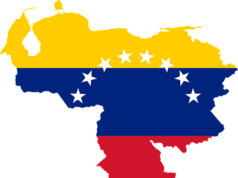He conflict had hinted. Over the past ten days, thousands of migrants arrived in Tijuana in the far northwest of Mexico. They had crossed the country in several columns coming from Central America in recent weeks. A central emergency shelter had been built in a sports center. In the tent city with a capacity for 3500 people meanwhile 5000 migrants are accommodated. On Sunday, many of them gathered for an initially peaceful protest march. Then the situation escalated.
Hundreds of migrants, most of them from Honduras, attempted to break the blockade of Mexican police on the San Diego border. While the Mexican authorities tried to secure the highway border crossing by blocking access via a bridge, many migrants ran through the dry riverbed to bypass the barrier. The police then reformed. Some of the migrants made their way to a second border crossing, along the railway lines around one hundred meters from the motorway.
There they got involved with the American Border Patrol. The United States Customs and Border Protection Agency officials closed the border and responded with tear gas from the US side. The border crossing in the de facto twin city of San Diego / Tijuana, the largest between the United States and Mexico, was reopened on Monday. Mexican workers were able to get to their jobs in San Diego, and American citizens working in American companies in Tijuana returned to Mexico. Just as it has been everyday life for thousands of workers for many years.
Economic consequences of closure
However, President Donald Trump sent a threat after Sunday’s incident. Through the short message service Twitter he called on the neighboring country to a consistent deportation of migrants. Mexico must send the people, many of whom are „ice-cold criminals“, back to their home countries. „Get it on the plane, get it on the bus, do it the way you want, but you do not come to the United States.“ If needed, his government would close the border permanently.
He did not become concrete. A complete closure would have enormous economic consequences for the San Diego / Tijuana metropolitan area, which is home to five million people. The Mexican Ministry of the Interior announced that it would deport those migrants who had participated in the riots. 500 of the 5,000 migrants in Tijuana had peacefully demonstrated that part of them wanted to storm the border. 39 people were arrested.
The American authorities, for their part, took 42 people into custody. Secretary of Homeland Security Kirstjen Nielsen said that some of the demonstrators involved in the storm had thrown objects at American officials. She said this before the incident: The Department of Homeland Security would not tolerate unlawful action in any way and do not hesitate to close the border to establish public safety.
Unarmed at the border
Before the Sunday riots, there had been a discussion about an agreement between the two states, after which Mexico agreed to keep the migrants on Mexican soil until American authorities decided on their asylum applications. In return, the US authorities would accelerate asylum procedures. Under current US law, asylum seekers must be granted residence until they decide on their application.
A bilateral agreement, however, would not contradict the legal situation. In Mexico it was denied that both sides had already agreed. Negotiations between the two governments were due to start on Sunday, but were postponed because of the chaotic state of the border. Andrés Manuel López Obrador, the elected president of Mexico, takes office on Saturday. In Tijuana itself, it is pointed out that one is not able to accommodate even more migrants.
The American military, which had summoned Trump to the southern border before the congressional elections, helped the border authorities set up barricades in San Diego. Trump had said last week that he had authorized the military to take action against violent criminals. Secretary of Defense James Mattis replied that despite the President’s authorization, the soldiers on the border were unarmed.



